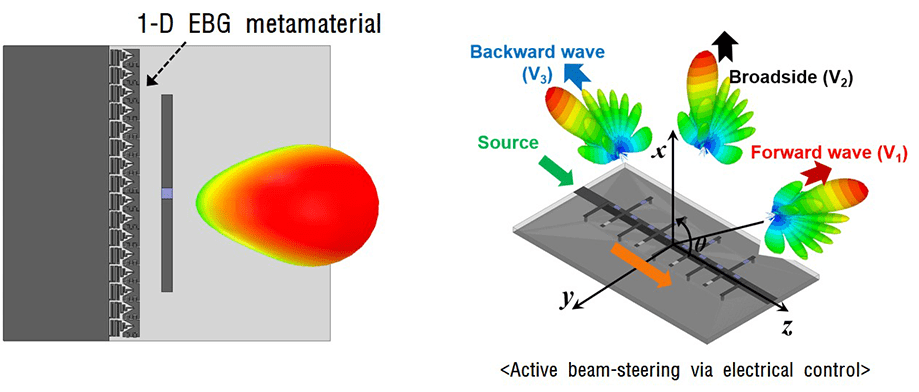Compound semiconductors are semiconductors in which two or more kinds of materials are mixed, and III-V compound semiconductors(GaN, GaAs, SiC) are combined
with elements corresponding to group-III and group-V in the periodic table. Silicon, which accounts for the vast majority of the semiconductor market,
is becoming more difficult to expect because of the limitations of semiconductor refinement. In order to overcome this problem, research has been focused on replacing
with compound semiconductors having excellent material properties such as high-speed operation, high output, and high breakdown voltage.
The AI, Big Data, 5G, autonomous vehicle, and IoT technologies discussed in the 4th Industrial revolution can eventually be compressed with the technological keywords of
“computing, networking, and sensing”, resulting in semiconductor technology. The super cycle of the on-going memory semiconductors is a starting point to show
the semiconductor demand which will increase explosively in the future society. Attempts to derive meaningful information from the explosion of data in various fields and
to make it service have been made in many industrial fields.
The MIDAS group is studying next-generation semiconductor devices and process technologies that can prepare for the future industrial age of the future. In detail,
researches on photoconductive semiconductor switches, nitride semiconductors, resistive-switching memories,
ferroelectrics-based microwave devices are under investigation.

Switches for high voltage, high current, and high repetition rate pulses are used in many applications such as high power microwave pulse generation systems, high power terahertz pulse generation systems, and high speed pulse acceleration systems. Spark-gap switches using vacuum tubes among power switching devices are capable of relatively higher voltage and current switching, but are not suitable for nanosecond switching because of the slow switching speed and inconsistent timing jitter.
A photoconductive semiconductor switch (PCSS) is optoelectronic device, which have unique advantages including ultrafast switching, reliable operation, and negligible jitter time. Moreover, solid state microwave generation using PCSS is available for the miniaturization by the device scaling. MIDAS group investigates the switching characteristics and high power operations reaching the limitations of semi-insulating III-V semiconductor(GaAs/SiC)-based photoconductive semiconductor switches for the industry of pulsed power applications.

GaN(Gallium Nitride) has advantages such as wide band gap, high electron mobility, high temperature stability and low on-resistance characteristics,
minimizing switching loss and minimizing system power consumption. Therefore, it is attracting attention as new-material in the next-generation wireless communication
semiconductor or power semiconductor. When used as a power amplifier for a mobile communication base station, the power density is 10 times higher than that
of a conventional silicon-based LDMOS transistor, which enables a power saving of 30% or more through miniaturization and light weight. In addition,
when used in high-power switching devices, switching losses and on-resistance losses are lower than conventional IGBTs, which can reduce energy consumption
by more than 30% and reduce fuel consumption by more than 10%.
Currently, the MIDAS group focuses on the design and fabrication technology of the nitride semiconductor device structure and conducts research and development.
In detail, we are conducting scaling studies to improve frequency characteristics, research for ideal ohmic contact formation, passivation process technology
for GaN surface protection, and self-alignment structure research to minimize access resistance.

The resistive-switching memory(ReRAM) is a MIM structure using a metal oxide. When an appropriate electrical signal is applied,
a memory characteristic in which the resistance changes from an off state to an on state with a small resistance appears.
The resistance change memory is faster than the conventional nonvolatile memory device, flash memory, by a writing speed of 10,000 times,
and can operate at a voltage as low as 5 V or less like a DRAM. Since it is possible to perform fast read-write such as SRAM and the memory device has a simple structure,
it is possible to remarkably reduce the manufacturing defects, and the production cost can be lower than that of the current DRAM.
In the near future, high-density, highly integrated, and low-power resistive memory is

attracting attention as a future memory device capable of replacing NAND flash memory. Because of the process advantages due to the simple structure
of the resistive-switching memory, it is advantageous to incorporate a three-dimensional stack structure, which results in improved performance over
existing memory technologies. In MIDAS group, we are investigating the switching mechanism that causes the ON/OFF operation of the resistive-switching memory,
and we are studying the resistive-switching memory unit with self-rectifying characteristic, so that no additional selection device is required.
The ferroelectric material exhibits a change in dielectric constant under a DC electric field. By using ferroelectric thin films for microwave components and devices,
voltage-controlled impedance matching has been achieved, which has evolved into a new class of tunable microwave devices. In MIDAS group,
the electrical characteristics of ferroelectric thin films such as BaxSr1-xTiO3(BST), 1-dimensional electromagnetic bandgap structure, frequency reconfigurable antenna
(frequency variable, radiation performance) and active beam-steering antenna are studied.
